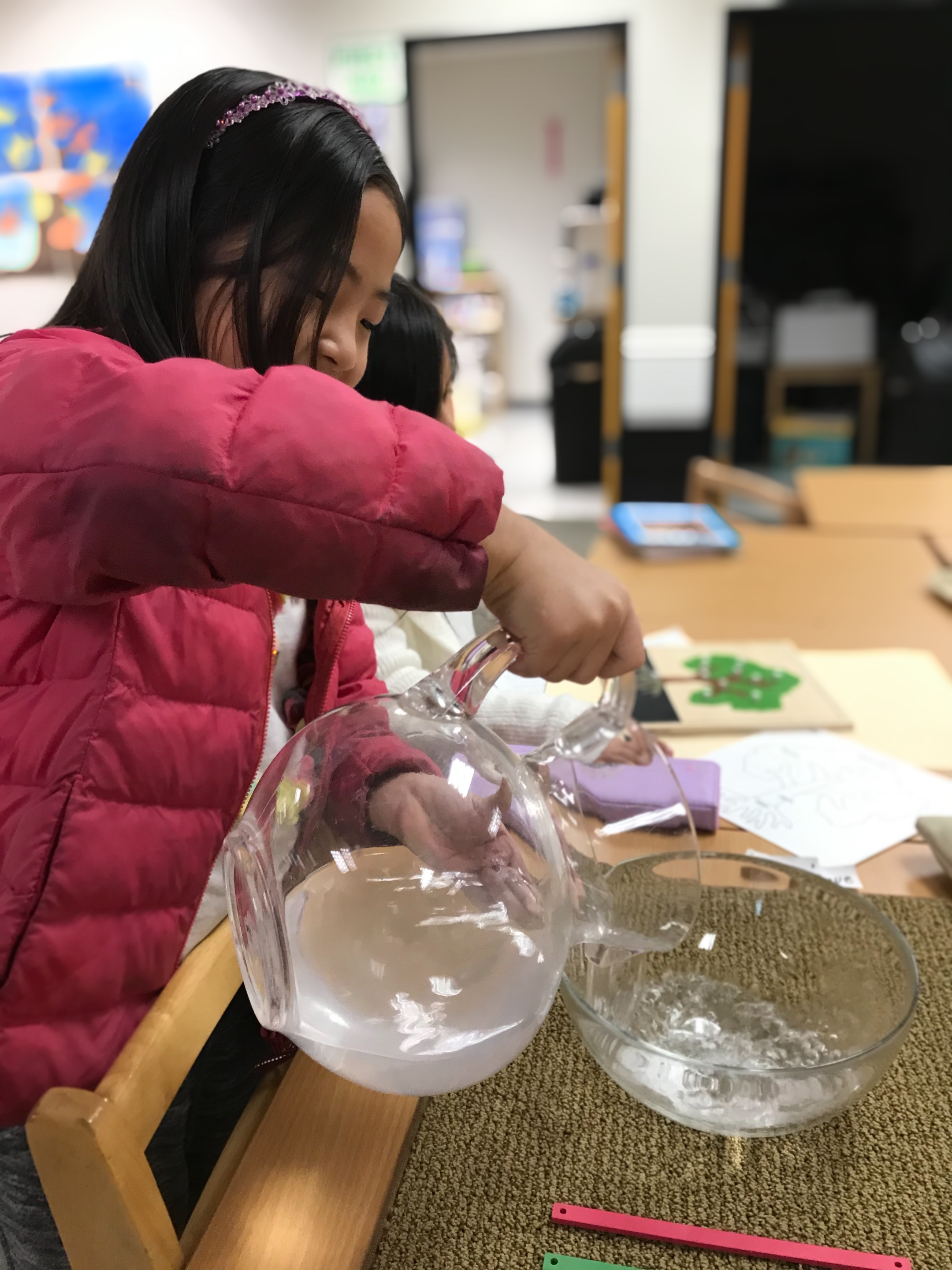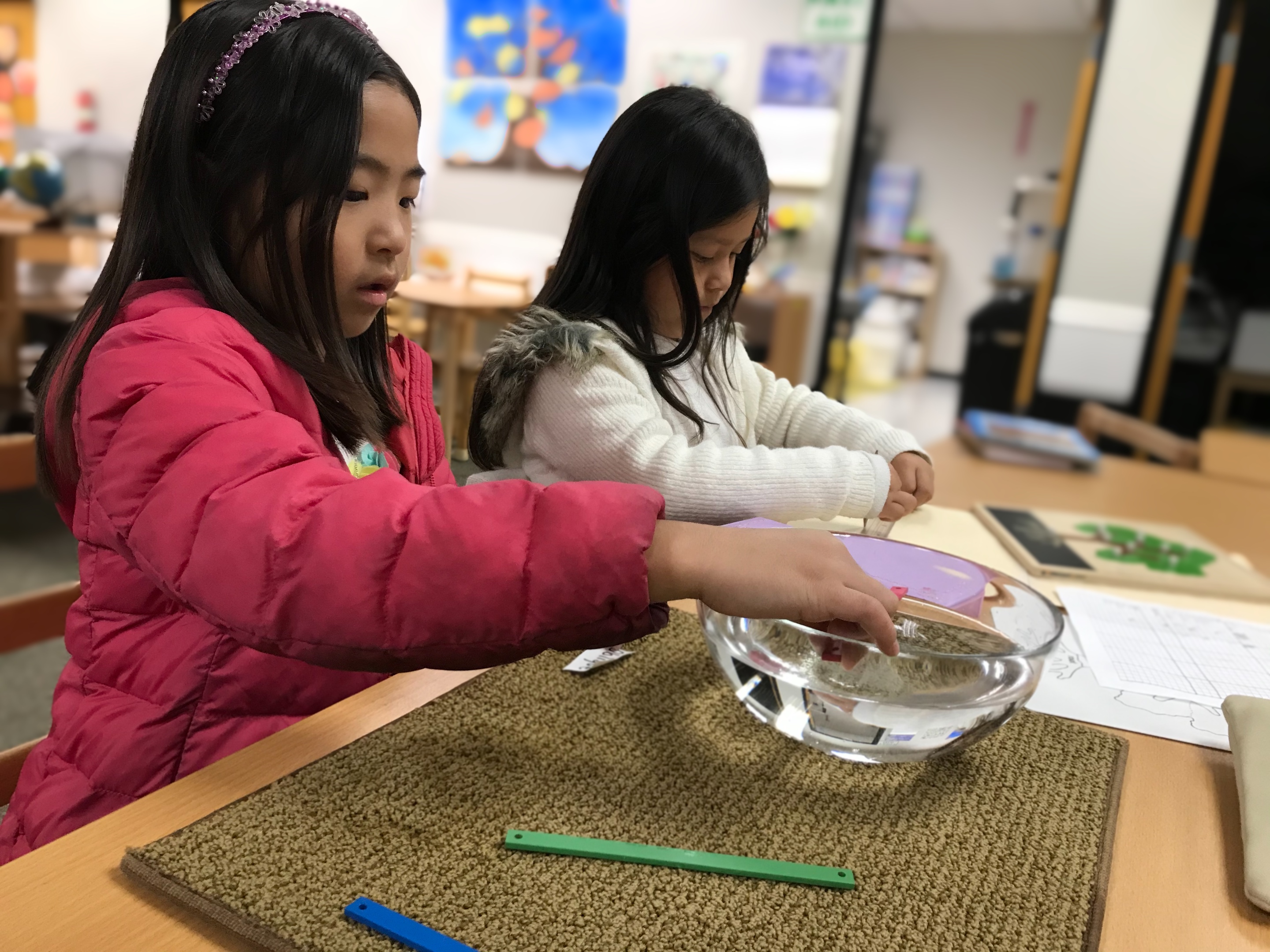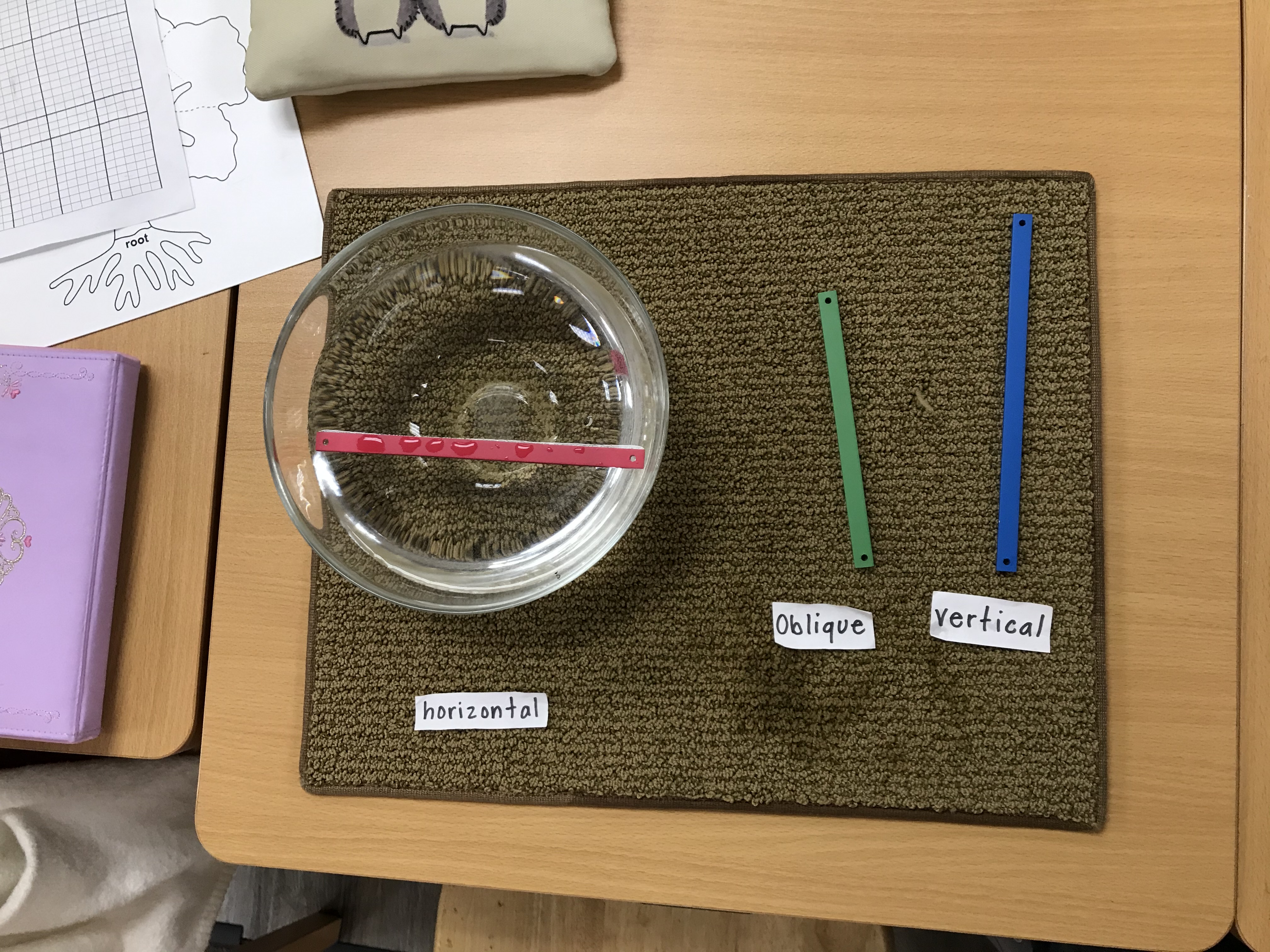Geometry and Sensorial Experimentation in the Montessori Elementary Classroom
Maria Montessori saw geometry as firmly rooted in reality. Starting with the word ‘geometry’, geo meaning “earth” and metria meaning “measure”, early geometry was about measuring the Earth. Montessori made a point to show the connections between the Earth, geometry and all subjects over the areas of the development of the whole child—hence the cosmic curriculum.
Her geometry curriculum in the Elementary classroom uses concrete, sensorial experimentation that leads students to abstract through concrete research. The focus of the geometry work is not as dependent on the result as it is by the work the student has done to achieve the result.
The work the students do is creative. Concrete, manipulatable materials offer chances for the children to reach abstraction. Doing this they become conscious of what they have previously absorbed in past lessons at the primary level. brings together the rational mind and imagination. The geometry curriculum focuses on the study of lines and angles, the characteristics of shapes like triangles, polygons, quadrilaterals and circles and congruence, similarity and equivalence of shapes.
Lesson: Horizontal, Vertical, Oblique
The main objective of this lesson is to recognize lines at different planes, it is one of the first lessons in Geometry in the Montessori Elementary Classroom.
Presentation:
- Pour the blue water into the glass bowl and shake it slightly so that the water is disturbed.
- Take a stick from the stick box. “This stick represents a line segment. At this moment the water in the bowl is in motion. We are going to wait until this water is completely still.”
- When the water is still, place the stick on the surface of the water. Get on eye level with the water in the bowl.
- “The water in this bowl is kind of like the water in the ocean, and when we look out at the water, where the water meets the sky we call the horizon. This is from the Latin word horizon, meaning limit or boundary.
- “This line segment, resting on the still water, is called a horizontal line.”
- Take the plumb line. “When carpenters want to make sure that a piece of wood that they are nailing is straight up and down, they use this tool. It is called a plumb line. The weight at the bottom pulls the string in a straight line.”
- Place another stick from the stick box next to the string on the plumb line.
- “When we have a line segment that follows the string of a plumb line, we say that the line segment is vertical. This comes from the Latin vertex, meaning highest point.”
- Hold it at an angle. “Is this line segment a vertical line following the string of a plumb line? Is this line segment horizontal by following the direction of the still water? A line segment that is neither horizontal nor vertical is called oblique. This word comes from the Latin obliquus, meaning to bend.”
- Place the stick in a series of planes indicating that each one is oblique.



